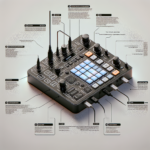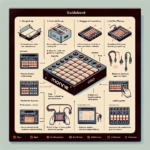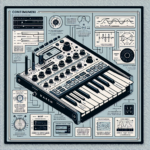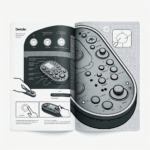LinnStrument 200: Comprehensive Guide to Features, Setup, and Performance
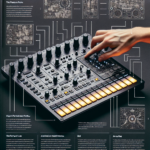
Introduction
The LinnStrument 200 is a revolutionary MIDI controller designed to offer musicians an unparalleled level of expressive control. Created by Roger Linn, a pioneer in the music technology industry, this controller is aimed at both professional musicians and serious hobbyists who seek a versatile and highly responsive instrument for both studio and live performance settings.
Roger Linn Design, the brand behind the LinnStrument 200, has a stellar reputation for innovation and quality in the music technology industry. Known for creating the iconic LinnDrum drum machine, the company continues to push the boundaries of what is possible in electronic music instruments.
Key Features Overview:
- 200 pressure-sensitive pads
- Polyphonic aftertouch
- Customizable MIDI mapping
- Seamless DAW integration
- Lightweight and portable design
- Advanced features like arpeggiators and chord modes
Design and Build Quality
Physical Design
The LinnStrument 200 boasts a sleek and modern design, featuring 200 pressure-sensitive pads arranged in a grid layout. The controller measures approximately 22.5 inches in length, 8.5 inches in width, and 1 inch in height, making it compact enough to fit into most studio setups. The materials used are high-quality, with a robust aluminum frame and durable silicone pads that can withstand extensive use.
Portability
Weighing in at just under 5 pounds, the LinnStrument 200 is highly portable. Its slim profile and lightweight design make it easy to transport, whether you’re heading to a gig or moving between studio sessions. The controller also comes with a custom carrying case, adding an extra layer of convenience for musicians on the go.
Durability
The build quality of the LinnStrument 200 is exceptional. The aluminum frame provides a sturdy structure, while the silicone pads are designed to endure heavy use without wearing out. Users have reported that the controller remains reliable even after years of regular use, making it a long-term investment for serious musicians.
Setup and Configuration
Initial Setup
Setting up the LinnStrument 200 is straightforward. Follow these steps to get started:
- Unbox the controller and connect it to your computer or hardware using the provided USB cable.
- Power on the controller by pressing the power button located on the side.
- Open your DAW or MIDI software to begin configuring the controller.
Software Installation
The LinnStrument 200 does not require any special drivers for basic functionality. However, to unlock its full potential, you may need to install the LinnStrument Editor software, available on the Roger Linn Design website. This software allows you to customize MIDI mappings, adjust sensitivity settings, and update firmware.
Compatibility
The LinnStrument 200 is compatible with a wide range of operating systems and DAWs:
- Operating Systems: Windows, macOS, Linux
- DAWs: Ableton Live, FL Studio, Logic Pro, Cubase, Pro Tools, and more
- Other Software: Compatible with most MIDI software and hardware synthesizers
Features and Functionality
Key Features
The LinnStrument 200 is packed with features that make it a versatile tool for musicians:
- Pressure-Sensitive Pads: Each of the 200 pads is pressure-sensitive, allowing for dynamic control over volume, pitch, and timbre.
- Polyphonic Aftertouch: This feature enables expressive playing by allowing each note to have its own aftertouch response.
- Customizable MIDI Mapping: Users can assign different MIDI functions to each pad, making the controller highly adaptable to various workflows.
Customizability
The LinnStrument 200 offers extensive customization options. Using the LinnStrument Editor software, users can reassign MIDI functions, adjust pad sensitivity, and create custom layouts. This level of customization ensures that the controller can be tailored to fit any musical style or performance requirement.
Unique Functions
One of the standout features of the LinnStrument 200 is its ability to detect three dimensions of touch: pressure, x-axis (left-right), and y-axis (up-down). This allows for incredibly expressive playing, similar to that of an acoustic instrument. Additionally, the controller includes built-in arpeggiators and chord modes, which can be easily accessed and customized.
Integration with DAWs
The LinnStrument 200 integrates seamlessly with popular DAWs. For example, in Ableton Live, users can map the pads to control clips, effects, and instruments. In Logic Pro, the controller can be used to play software instruments with a high degree of expressiveness. The controller’s MIDI mapping capabilities make it compatible with virtually any DAW, providing a flexible solution for music production.
Advanced Features
Beyond its core features, the LinnStrument 200 offers several advanced functionalities:
- Aftertouch: Allows for nuanced control over parameters like vibrato and filter cutoff.
- Arpeggiators: Built-in arpeggiators can be customized to create complex rhythmic patterns.
- Chord Modes: Enables users to play chords with a single pad, simplifying complex harmonic progressions.
Performance
Latency and Responsiveness
The LinnStrument 200 excels in terms of latency and responsiveness. The pressure-sensitive pads respond instantly to touch, providing a tactile and immediate playing experience. Users have reported minimal latency, even when using the controller with demanding software instruments and effects.
Real-World Usage
In practical scenarios, the LinnStrument 200 performs exceptionally well. Whether used in a live performance or a studio session, the controller offers a high level of expressiveness and control. Musicians have praised its ability to capture subtle nuances in their playing, making it a valuable tool for both recording and live gigs.
User Experience
User feedback for the LinnStrument 200 has been overwhelmingly positive. Musicians appreciate its versatility, build quality, and expressive capabilities. Many users have noted that the controller has become an integral part of their setup, both in the studio and on stage.
Applications and Use Cases
Beginner vs. Professional Use
The LinnStrument 200 is suitable for both beginners and professionals. While its advanced features may appeal more to experienced musicians, its intuitive design makes it accessible for beginners as well. The controller’s customizable settings allow users to start with basic functions and gradually explore more complex capabilities as they become more comfortable.
Studio Use
In a studio environment, the LinnStrument 200 shines as a versatile tool for music production and recording. Its pressure-sensitive pads and polyphonic aftertouch make it ideal for playing software instruments with a high degree of expressiveness. The controller’s customizable MIDI mappings also allow it to be used for controlling DAW functions, making it a valuable addition to any studio setup.
Live Performance
The LinnStrument 200 is equally well-suited for live performance. Its lightweight and portable design make it easy to transport, while its robust build ensures reliability on stage. The controller’s expressive capabilities allow musicians to deliver dynamic and engaging performances, whether playing solo or as part of a band.
Specific Genres
The LinnStrument 200 excels in a variety of musical genres. Its expressive capabilities make it particularly well-suited for genres that require nuanced playing, such as classical and jazz. However, its versatility also makes it a valuable tool for electronic music genres like EDM and hip-hop, where its customizable MIDI mappings and built-in arpeggiators can be used to create complex rhythmic patterns and textures.
Pros and Cons
Pros:
- Highly expressive with pressure-sensitive pads and polyphonic aftertouch
- Customizable MIDI mappings
- Seamless integration with popular DAWs
- Lightweight and portable design
- Robust build quality
Cons:
- Steeper learning curve for beginners
- Higher price point compared to some other MIDI controllers
- Requires additional software for full customization
Common Issues and Troubleshooting
Known Issues
While the LinnStrument 200 is generally well-received, some users have reported issues with pad sensitivity and occasional connectivity problems. These issues are relatively rare and can often be resolved with firmware updates or adjustments in the LinnStrument Editor software.
Troubleshooting Tips
- Pad Sensitivity: If you experience issues with pad sensitivity, try adjusting the sensitivity settings in the LinnStrument Editor software.
- Connectivity: Ensure that your USB cable is securely connected and that your computer recognizes the controller. If issues persist, try using a different USB port or cable.
- Firmware Updates: Regularly check the Roger Linn Design website for firmware updates, which can resolve many common issues.
Customer Support
Roger Linn Design offers excellent customer support for the LinnStrument 200. Users can access a comprehensive online knowledge base, including tutorials and troubleshooting guides. Additionally, the company provides prompt and helpful responses to customer inquiries via email and social media.
Comparisons with Similar Controllers
Competitor Comparison
When compared to similar MIDI controllers, the LinnStrument 200 stands out for its expressive capabilities and build quality. Competitors like the ROLI Seaboard and the Sensel Morph offer similar features but often fall short in terms of durability and customization options.
Feature Comparison
The LinnStrument 200 excels in several key areas:
- Expressiveness: The combination of pressure-sensitive pads and polyphonic aftertouch provides a level of expressiveness that is unmatched by many competitors.
- Customization: The LinnStrument Editor software allows for extensive customization, making it adaptable to various workflows and musical styles.
- Build Quality: The robust aluminum frame and durable silicone pads ensure long-term reliability.
Conclusion
Summary
The LinnStrument 200 is a highly versatile and expressive MIDI controller that offers a range of features designed to meet the needs of both professional musicians and serious hobbyists. Its pressure-sensitive pads, polyphonic aftertouch, and customizable MIDI mappings make it a valuable tool for both studio and live performance settings.
Who Should Buy This?
The LinnStrument 200 is best suited for musicians who require a high level of expressiveness and customization in their MIDI controller. While it may have a steeper learning curve for beginners, its intuitive design and extensive features make it a worthwhile investment for those willing to explore its full potential.
Final Thoughts
Overall, the LinnStrument 200 is a standout MIDI controller that offers a unique combination of expressiveness, customization, and build quality. Whether you’re a professional musician or a serious hobbyist, this controller is sure to enhance your musical creativity and performance capabilities.
FAQ
Is the LinnStrument 200 compatible with my DAW?
Yes, the LinnStrument 200 is compatible with most popular DAWs, including Ableton Live, FL Studio, Logic Pro, Cubase, and Pro Tools.
Do I need to install any special drivers?
No special drivers are required for basic functionality. However, installing the LinnStrument Editor software is recommended for full customization and firmware updates.
Can I use the LinnStrument 200 for live performances?
Yes, the LinnStrument 200 is well-suited for live performances due to its lightweight and portable design, robust build quality, and expressive capabilities.
How do I update the firmware?
Firmware updates can be downloaded from the Roger Linn Design website and installed using the LinnStrument Editor software.
What genres of music is the LinnStrument 200 best suited for?
The LinnStrument 200 excels in a variety of genres, including classical, jazz, EDM, and hip-hop, thanks to its expressive capabilities and customizable features.
Where to Buy
The LinnStrument 200 can be purchased directly from the Roger Linn Design website. It is also available from major music equipment retailers such as Sweetwater, Guitar Center, and Thomann. Be sure to check with your preferred retailer for availability and pricing.

